In September I had two big deadlines, so I didn’t get to read as much as I would have liked, and three of the four were related to our research/discussion for the Australian Fairy Tale Society’s stories – this month we were investigating Belle-Belle ou Le Chevalier Fortune and The Girl Who Pretended To Be A Boy, both ATU 514: The Shift of Sex (plus ATU 513, 884 and 328)…
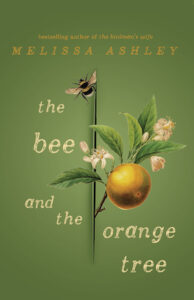 The Bee and the Orange Tree (53 of 52) by Australian author Melissa Ashley is the story of Madame Marie Catherine d’Aulnoy, the French author of Belle-Belle, ou le Chevalier Fortune, who was the first to coin the term contes des fees – faery tales (although she didn’t invent them) – so this historical fiction novel was a wonderful read as background for our two tales. Set in Paris in 1699, the story centres on Marie Catherine, her youngest daughter Angelina, and her friend Nicola Ticquet, the latter facing trial, and potential beheading, for the attempted murder of her abusive husband. The literary salons Madame d’Aulnoy hosted were bursting with the creative energy of independent women employing faery tales as a weapon in their fight for equality – but outside those doors, the patriarchal forces of Louis XIV and the Catholic Church are moving to curb their freedoms, and the injustice is hard/sad to read. There’s less about faery tales than I expected, and it was a bit hard to get into (there are so many characters it was hard to keep track), but there are a few lovely passages about writing and its power, and I loved some of the characters and their relationships. And the bees, of course!
The Bee and the Orange Tree (53 of 52) by Australian author Melissa Ashley is the story of Madame Marie Catherine d’Aulnoy, the French author of Belle-Belle, ou le Chevalier Fortune, who was the first to coin the term contes des fees – faery tales (although she didn’t invent them) – so this historical fiction novel was a wonderful read as background for our two tales. Set in Paris in 1699, the story centres on Marie Catherine, her youngest daughter Angelina, and her friend Nicola Ticquet, the latter facing trial, and potential beheading, for the attempted murder of her abusive husband. The literary salons Madame d’Aulnoy hosted were bursting with the creative energy of independent women employing faery tales as a weapon in their fight for equality – but outside those doors, the patriarchal forces of Louis XIV and the Catholic Church are moving to curb their freedoms, and the injustice is hard/sad to read. There’s less about faery tales than I expected, and it was a bit hard to get into (there are so many characters it was hard to keep track), but there are a few lovely passages about writing and its power, and I loved some of the characters and their relationships. And the bees, of course!
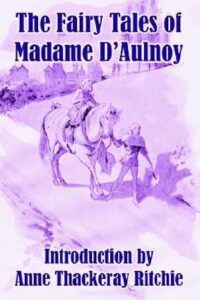 Belle-Belle, ou le Chevalier Fortune, by Madame d’Aulnoy, was published in 1698 (54a of 52). The King demands a son from each noble family to fight for him, but alas, one family only has three daughters. Long story short, the youngest daughter helps a faery disguised as an old woman, is gifted a wise talking horse and many riches, and manages to pass as a soldier named Fortune. Belle/Fortune falls in love with the King, but can’t tell him, and the King’s sister falls in love with “him”, and is so enraged when he refuses her advances that she sends him on many supposed-to-be-fatal quests, then fakes an assault so he will be put to death. At the last moment he is disrobed, Fortune is revealed as Belle-Belle, the Queen dies, and the youngest daughter gets to be a woman again and marry the King…
Belle-Belle, ou le Chevalier Fortune, by Madame d’Aulnoy, was published in 1698 (54a of 52). The King demands a son from each noble family to fight for him, but alas, one family only has three daughters. Long story short, the youngest daughter helps a faery disguised as an old woman, is gifted a wise talking horse and many riches, and manages to pass as a soldier named Fortune. Belle/Fortune falls in love with the King, but can’t tell him, and the King’s sister falls in love with “him”, and is so enraged when he refuses her advances that she sends him on many supposed-to-be-fatal quests, then fakes an assault so he will be put to death. At the last moment he is disrobed, Fortune is revealed as Belle-Belle, the Queen dies, and the youngest daughter gets to be a woman again and marry the King…
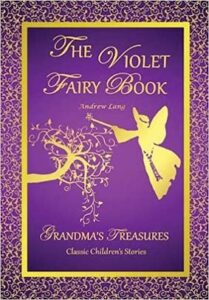 But the better ending is in The Girl Who Pretended To Be A Boy (54b of 52), which has been acclaimed as a transgender faery tale. It was recorded by Andrew and Nora Lang in their Violet Fairy Book of 1901, based on the French tale Jouvencelle-Jouvenceau (Young Woman-Young Man) published by Jules Brun in 1894, which was in turn based on the Romanian story Ileana Simziana, recorded by Petre Ispirescu in 1872 (and so the threads of connection continue, backward through the years, through myth and legend and history). It has similarities to Belle-Belle, except that the third daughter goes into service for a sketchy emperor not a kind king, but she still gets a wise talking horse and much wealth, and is sent on many quests, including to rescue the beautiful Iliane, who the cruel emperor plans to marry. Fortunately in this story, there’s a curse that turns the girl who’s pretending to be a boy into an actual boy, and in case anyone thought that was a bad thing that needed to be magically reversed, Nora Lang added a new element to her version. After the girl who was pretending to be a boy stole some holy water as part of a quest, the priest “fell on his knees and called his most deadly curse down on her head, praying that if the thief was a man, he might become a woman; and if she was a woman, that she might become a man. In either case he thought that the punishment would be severe…” In other versions, this was apparently not described as a wonderful thing, yet Nora added: “But punishments are things about which people do not always agree, and when the princess suddenly felt she was really the man she had pretended to be, she was delighted, and if the hermit had only been within reach she would have thanked him from her heart…” which has made people today see it as a trans-affirming faery tale.
But the better ending is in The Girl Who Pretended To Be A Boy (54b of 52), which has been acclaimed as a transgender faery tale. It was recorded by Andrew and Nora Lang in their Violet Fairy Book of 1901, based on the French tale Jouvencelle-Jouvenceau (Young Woman-Young Man) published by Jules Brun in 1894, which was in turn based on the Romanian story Ileana Simziana, recorded by Petre Ispirescu in 1872 (and so the threads of connection continue, backward through the years, through myth and legend and history). It has similarities to Belle-Belle, except that the third daughter goes into service for a sketchy emperor not a kind king, but she still gets a wise talking horse and much wealth, and is sent on many quests, including to rescue the beautiful Iliane, who the cruel emperor plans to marry. Fortunately in this story, there’s a curse that turns the girl who’s pretending to be a boy into an actual boy, and in case anyone thought that was a bad thing that needed to be magically reversed, Nora Lang added a new element to her version. After the girl who was pretending to be a boy stole some holy water as part of a quest, the priest “fell on his knees and called his most deadly curse down on her head, praying that if the thief was a man, he might become a woman; and if she was a woman, that she might become a man. In either case he thought that the punishment would be severe…” In other versions, this was apparently not described as a wonderful thing, yet Nora added: “But punishments are things about which people do not always agree, and when the princess suddenly felt she was really the man she had pretended to be, she was delighted, and if the hermit had only been within reach she would have thanked him from her heart…” which has made people today see it as a trans-affirming faery tale.
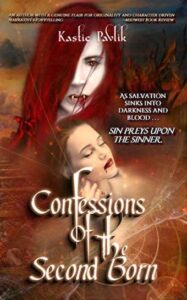 Humans. Vampires. God. Lucifer. One woman stands between them…
Humans. Vampires. God. Lucifer. One woman stands between them…
Confessions of the Second Born (55 of 52) by Kastie Pavlik is book two of the Children of the Morning Star series. I loved book one, The Arrival, and this second instalment is just as intriguing and page-turning. Paresh is still that one woman standing between all the warring factions, but she’s not the only one a little more battered and bruised. While her story continues, I also love the glimpses of the Vampiric Nation, which is a new spin on vampires and their history, lore and world, and the window that opens into powerful vampire (the second-born of the title) Jonathan’s mind and actions. His back story is fascinating, and learning about his relationship with Eric over the decades gives so much insight into both of them. I also love the rich real-life historical detail woven through the story, from early American wars to politics, which adds depth and weight to the story. There are a couple of kick-ass new characters, lots of action, a little romance, a plot twist or two, and lots of magic and intrigue. And I’m really looking forward to book three, Last Born Daughter, which is out on October 20…
💕 📚 🌟
August Reads
August was a wonderful mix of important stories, gorgeous fantasy, a nostalgic hit, and faery tales and faery tale reimaginings.
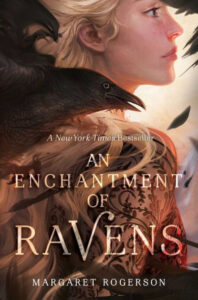 An Enchantment of Ravens (47 of 52) by Margaret Rogerson is a lovely, magical tale of faeries and humans, forbidden love, sweet romance, a desperate quest, and an enchanting, gorgeously described world with flawed characters and a hint of menace. It’s beautifully written, and it was nice to dive into a stand-alone book that could be read quickly, rather than a series, although I’m looking forward to reading the author’s other book Sorcery of Thorns soon. The title is awesome, the cover is gorgeous, and of course I love ravens and raven magic, like Rhiannon does…
An Enchantment of Ravens (47 of 52) by Margaret Rogerson is a lovely, magical tale of faeries and humans, forbidden love, sweet romance, a desperate quest, and an enchanting, gorgeously described world with flawed characters and a hint of menace. It’s beautifully written, and it was nice to dive into a stand-alone book that could be read quickly, rather than a series, although I’m looking forward to reading the author’s other book Sorcery of Thorns soon. The title is awesome, the cover is gorgeous, and of course I love ravens and raven magic, like Rhiannon does…
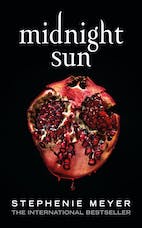 My book club made Midnight Sun (48 of 52), author Stephenie Meyer’s retelling of Twilight from Edward’s perspective, our together-read, which was awesome because I may not have read it otherwise (just because I already have so many books I can’t wait to read!). And I’m glad I did. In 2008, after doing final edits on my first book Seven Sacred Sites, I curled up on the couch for a week, drank tea and read all four Twilight books, and it was bliss to chill out, mind and body.
My book club made Midnight Sun (48 of 52), author Stephenie Meyer’s retelling of Twilight from Edward’s perspective, our together-read, which was awesome because I may not have read it otherwise (just because I already have so many books I can’t wait to read!). And I’m glad I did. In 2008, after doing final edits on my first book Seven Sacred Sites, I curled up on the couch for a week, drank tea and read all four Twilight books, and it was bliss to chill out, mind and body.
Midnight Sun was fun, and weirdly compelling given that we knows what happens. It was fascinating being in Edward’s head, and learning about his earlier life, and more about all the Cullen vampires (and to be honest, I was kinda happy there was very little Jacob)… And I *loved* the revelation of Edward’s side of the biology class scene!
It’s a *massive* book, so I did expect more of Edward’s pre-Bella life, but as he believed he was only born a vampire to love her, I guess it makes sense. And there is a lot of pre-Forks stuff sprinkled through, but no info dumps, for those who love to hate her writing… I kinda loved it, for a fun, relaxing read, curled up on the couch again on a rainy weekend, drinking tea and chilling out in a fun otherworld…
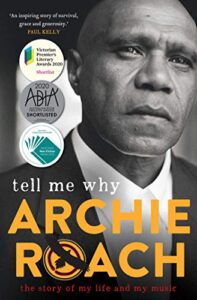 “Sometimes you can go years without really changing as a person. Maybe you get a little rounder, a little balder, but inside you’re the same man. Same values, same hopes, pretty much the same bloke. Sometimes though, it can all change in a day. In the morning you have one life ahead of you and in the afternoon another. That happened to me once, when I was a boy…”
“Sometimes you can go years without really changing as a person. Maybe you get a little rounder, a little balder, but inside you’re the same man. Same values, same hopes, pretty much the same bloke. Sometimes though, it can all change in a day. In the morning you have one life ahead of you and in the afternoon another. That happened to me once, when I was a boy…”
I loved Archie Roach’s deeply moving memoir Tell Me Why (49 of 52). It’s a story of pain and loss and anger, of jail and addiction and death, but it is also a story of the deepest love, and of the healing power of family, friendship, music and country. Singer (and friend, collaborator and producer) Paul Kelly is right: This book is an extraordinary odyssey and offering, an inspiring tale of survival, grace and generosity, and it should be in every school.
Archie is a wonderful singer, songwriter and performer, a truth teller, survivor, and campaigner for Aboriginal rights. He is also a member of the Stolen Generations, as was the great love of his life, gorgeous writer and performer Ruby Hunter, and together they helped each other towards healing, then went on to help so many other survivors find a way to continue. Archie’s heartbreaking song Took the Children Away, released in 1990, brought the horror of the Stolen Generations to light for many, and much of his three decades of powerful music has addressed its impact on himself and others, his long search for family, for belonging and purpose, and his incredible capacity to maintain hope through so much suffering.
I struggle to comprehend how governments (by which I mean people) could come up with such shameful policies, let alone carry them out, but in Australia between 1910 and 1970, many First Nations children were forcibly removed from their families, leaving a legacy of trauma and grief, and the loss of connection to family, identity, land, language and culture. Intergenerational trauma continues to affect those who were stolen, as well as their families and descendants, with high rates of depression, anxiety, PTSD and suicide, and poor health and socioeconomic outcomes, for the many who suffered from this gross injustice. I hope this book will help more people understand.
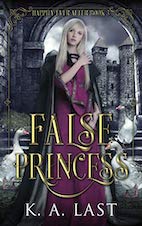 “Blood drips from the end of my mother’s finger. One. Two. Three.”
“Blood drips from the end of my mother’s finger. One. Two. Three.”
The third book in K. A. Last’s Happily Ever After series is False Princess (50 of 52), a reimagining of The Goose Girl, first recorded by The Brothers Grimm in 1815. It’s the story of a princess not keen on an arranged marriage, whose maid convinces her to swap places with her so she can get to know the prince before deciding if she wants to marry him. But of course once the maid is treated like a princess, she doesn’t want to go back! There’s magic, spells, intrigue, deception, learning, love and a talking horse – such a sweet story. It’s up for preorder on Amazon, out October 12.
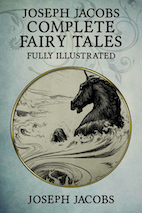 Then I spent a week reading up on and investigating Jack and the Beanstalk (51 of 52) for our Australian Fairy Tale Society discussion. There are so many versions of the story, so many movies, so many interpretations, and so much gorgeous art.
Then I spent a week reading up on and investigating Jack and the Beanstalk (51 of 52) for our Australian Fairy Tale Society discussion. There are so many versions of the story, so many movies, so many interpretations, and so much gorgeous art.
The most famous/popularly accepted version of the story is by Australian folklorist Joseph Jacobs, from his 1890 collection English Fairy Tales. (I bought his Complete Fairy Tales, which collects his books English Fairy Tales, Celtic Fairy Tales, More English Fairy Tales, More Celtic Fairy Tales, Indian Fairy Tales and European Fairy Tales – 187 faery tales all up…)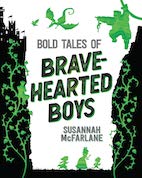
But my favourite version is from Bold Tales for Brave-Hearted Boys by Australian author Susannah McFarlane, where Gentle Jack is the lovely, kind, hardworking giant, and human Jack is a nasty, mean, miserable thief – but they both learn and grow through their adventure together…
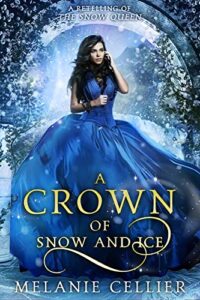
I also enjoyed Aussie author Melanie Cellier’s sweet story A Crown of Snow and Ice (book 52 of 52 – woo hoo, I’ve hit my #bookaweek target for this year already!). A reimagining of Hans Christian Andersen’s The Snow Queen, it’s full of adventure, romance, mystery, a curse, and a little bit of magic. It’s part of Melanie’s interconnected Beyond the Four Kingdoms series, which each feature a different princess who has to fight for her happily ever after, and can all be read as stand-alone stories…
💕 📚 🌟
July Reads
July was a fascinating month for books, and online book launches.
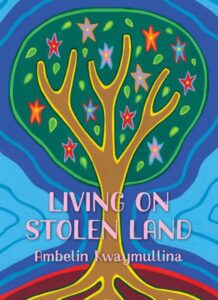 Living On Stolen Land (40 of 52) by Ambelin Kwaymullina is a short, powerful book that *everyone* should read (although sadly those who most need to hear these words of wisdom – including politicians, police and policy makers – will turn away again). It’s devastating and heartbreaking, yet uplifting, inspiring and full of hope too. And it leaves the ball firmly in the court of non-Indigenous people – to check our biases (explicit, structural and unconscious), to challenge our behaviours, to listen, really listen, and give space for Indigenous voices, and to work towards a decolonised future. Ambelin has also written several YA books, and written and/or illustrated some gorgeous kids books (she also painted this gorgeous cover)…🖤
Living On Stolen Land (40 of 52) by Ambelin Kwaymullina is a short, powerful book that *everyone* should read (although sadly those who most need to hear these words of wisdom – including politicians, police and policy makers – will turn away again). It’s devastating and heartbreaking, yet uplifting, inspiring and full of hope too. And it leaves the ball firmly in the court of non-Indigenous people – to check our biases (explicit, structural and unconscious), to challenge our behaviours, to listen, really listen, and give space for Indigenous voices, and to work towards a decolonised future. Ambelin has also written several YA books, and written and/or illustrated some gorgeous kids books (she also painted this gorgeous cover)…🖤
Ambelin was interviewed by Teela Reid from @blackfulla_bookclub for the book launch, a wonderful, confronting, inspiring conversation, which Gleebooks has posted on their YouTube channel – it’s definitely worth a listen…
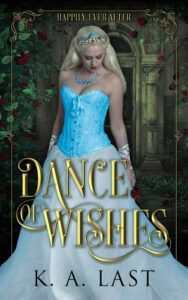 ❤️ Once I finished that, I was struggling to write, so I curled up with a cup of tea and read Dance of Wishes by K. A. Last (41 of 52), a sweet faery tale short story that’s part of the Princess Bachelorette boxset. It’s beautifully written, and has romance, true love, a king more concerned with the crown than his daughter, and a little magical spell to reveal the larger truth…
❤️ Once I finished that, I was struggling to write, so I curled up with a cup of tea and read Dance of Wishes by K. A. Last (41 of 52), a sweet faery tale short story that’s part of the Princess Bachelorette boxset. It’s beautifully written, and has romance, true love, a king more concerned with the crown than his daughter, and a little magical spell to reveal the larger truth…
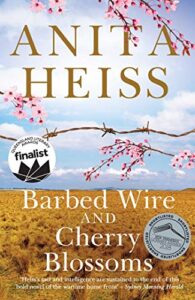
Barbed Wire and Cherry Blossoms (42 or 52), by wonderful author Anita Heiss, is a beautiful, touching novel, gorgeously written and meticulously researched. It begins during the Cowra breakout of August 1944, when more than a thousand Japanese WWII POWs broke out of the central NSW camp where they were being held, and is a fascinating (and devastatingly sad) snapshot of Australia at that time – a time of the White Australia policy, racial fear-mongering, and the absolutely heartbreaking way the government treated First Nations people (even worse than the way they treated the much-despised Japanese POWs, which is unforgiveable and so mind-bogglingly unjust).
But this book is far more than a historical retelling, it’s the story of one Japanese soldier, Hiroshi, the Aboriginal family who hide him for more than a year, and the love that grows between him and their daughter Mary. Despite so many fundamental differences, their relationship is full of tenderness and understanding, self-discovery as they each open the other’s mind to new beliefs and ways of seeing the world, and a shared connection to nature and the land of their birth that is so much a part of both of them. I am mortified by Australia’s terrible treatment of First Nations people 250 years ago, when the British colonised this land without treaty, and devastated that there is still terrible injustice today. In the acknowledgements, Anita writes: “I hope this book adds something to your own journey in life. I believe that understanding and appreciating who we are today requires us to understand and accept who and what we have been, collectively as a nation, in the past.” It has, and it does. I hope real change is close.
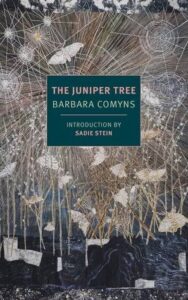
💛 I only started reading The Juniper Tree by Barbara Comyns (43 of 52) because we’re studying the Grimm Brothers story it’s based on, and I’m not sure I would have finished it otherwise. I didn’t love the characters or the writing style (there was far more telling than showing), it dragged in the middle, didn’t match its time period, and had some odd structural choices, but unlike some people, I liked the ending, and the subtle little seeds of the original faery tale sprinkled throughout were fun (definitely read the Grimm tale first, because it doesn’t work without it). Reviews are split between sheer brilliance and badly plotted and boring, so you might love it! (And weirdly, in retrospect I like it more than I thought I did while reading it, so…)
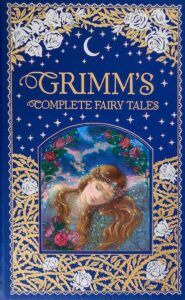 Next I read The Juniper Tree faery tale (44 of 52), including versions from The Brothers Grimm (who credited the source as artist and author Philipp Otto Runge), Angela Carter and Philip Pullman, as well as variants like The Rose Tree, The Crow’s Nest, The Little Boy and the Wicked Stepmother, and The Milk-White Dove, plus research into the type – how disturbing that there’s a faery tale classification for all the stories that fall under the My Mother Killed Me, My Father Ate Me trope (ATU 720) – and the ancient myths and tales that are echoed within the story, from Isis and Osiris to Medea, Tantalus, Philomela, Atreus and even Shakespeare’s Titus Andronicus, as well as the Christian allusions, and the shared motifs, including with Aschenputtel, the German Cinderella (not the eating, just the dead mother as tree spirit and gift giver aspect)…
Next I read The Juniper Tree faery tale (44 of 52), including versions from The Brothers Grimm (who credited the source as artist and author Philipp Otto Runge), Angela Carter and Philip Pullman, as well as variants like The Rose Tree, The Crow’s Nest, The Little Boy and the Wicked Stepmother, and The Milk-White Dove, plus research into the type – how disturbing that there’s a faery tale classification for all the stories that fall under the My Mother Killed Me, My Father Ate Me trope (ATU 720) – and the ancient myths and tales that are echoed within the story, from Isis and Osiris to Medea, Tantalus, Philomela, Atreus and even Shakespeare’s Titus Andronicus, as well as the Christian allusions, and the shared motifs, including with Aschenputtel, the German Cinderella (not the eating, just the dead mother as tree spirit and gift giver aspect)…
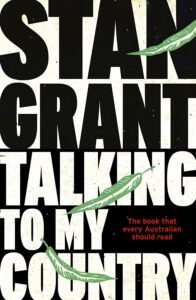 🖤 My last read for July was Stan Grant’s Talking To My Country (45 of 52), a personal meditation on what it means to be Australian, what it means to be Indigenous, and what racism really means in this country. It begins: “I want to tell you about the road that leads to my parents’s house. It was here my people were murdered.” and is a wonderful insight into this talented journalist’s life, history and beliefs.
🖤 My last read for July was Stan Grant’s Talking To My Country (45 of 52), a personal meditation on what it means to be Australian, what it means to be Indigenous, and what racism really means in this country. It begins: “I want to tell you about the road that leads to my parents’s house. It was here my people were murdered.” and is a wonderful insight into this talented journalist’s life, history and beliefs.
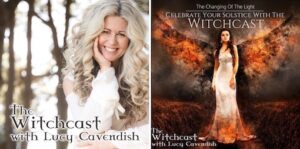
And instead of listening to audiobooks this month while I walked or drove, I listened to Lucy Cavendish’s wonderful weekly Witchcast, a bewitching podcast for Dreamers, Misfits, Seekers and Believers. It’s an intriguing blend of interviews with artists, singers, writers and other magical practitioners, plus witchy news, occult history, card readings, in-depth analysis of the real-life magic in popular supernatural movies and TV shows, both new and classic, and much more.
💕 📚 🌟
June Reads
June has been a strange, unsettling month, of high tension, of long overdue attention on black lives mattering, and of educating ourselves to learn more, do more and be better.
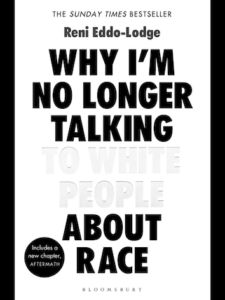
Award-winning journalist Reni Eddo-Lodge’s book Why I’m No Longer Talking To White People About Race (34 of 52) is a searing, illuminating, absolutely necessary examination of what it is to be a person of colour in Britain today, which is a powerfully moving read for people from other countries too. Exploring issues from eradicated black history to the inextricable link between class and race, the systemic racism that is so deeply entrenched in so many institutions, and the terrible way some white feminists treat black feminists (I was devastated to discover this), I definitely recommend it. It’s heartbreaking and devastating and uncomfortable to read, but it needs to be read, and heard, and then something needs to be done. I bought the audiobook, which is beautifully, passionately and clearly narrated by the author. The book grew out of a blog Reni wrote in 2014, called Why I’m No Longer Talking To White People About Race, about her frustration with the way discussions of race and racism in Britain were being led by those who weren’t affected by it. The post went viral, and she has, ironically, spent much of her time since having vital conversations with white people about race. The book won awards on its release in 2017, and last month it became the first book by a black British author to top the paperback non-fiction charts in the UK. The audiobook topped the Audible charts too. It’s awful that it took such tragedy and pain to get people to listen, but I’m glad we finally are. I listened to the audiobook, narrated by Reni, then bought the paperback too so I can refer back to various parts. (And I just saw that Reni also has a podcast, About Race with Reni Eddo-Lodge, which I’ll check out at some point…)
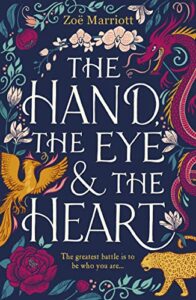
The Hand, The Eye & The Heart by Zoe Marriott (35 of 52) is a beautiful story of love, courage and discovering your true self. The characters are all richly drawn and complex, the plot is tightly woven with some great twists, and the gender fluidity of the MC is touchingly explored. I’m not the biggest fan of battles and training and warriors and warcraft, yet I was sucked in to the story and had to know what happened – there were a few very late nights staying up reading. It’s very loosely inspired by the Ballad of Mulan, but has little in common with Disney’s version – it’s its own story, with its own characters, situations and plot. Thank you @read3rz_revu for the gift! There has been some controversy over the English author setting the book in a fantasy world based on ancient China, and I admit this did make me feel a little uncomfortable about reading it, or sharing about it. I’m glad this is now a conversation and a consideration though, and it’s certainly something authors are discussing at great length. While writing, Zoe had several beta readers as well as sensitivity readers of Chinese and East Asian heritage, including a Chinese professor of English. And while she identifies as queer, she isn’t trans, so she had advice and support from several trans and non-binary people while she was writing, and once it was finished, had two trans sensitivity readers, including one of her closest friends. Knowledge and attitudes have shifted so much, and so quickly, in this area, which is a good thing. I’m not sure the vicious cancel culture of the YA community is the most positive way forward though, when an author who called out a fellow writer and got her book cancelled then had to pull his own for similar reasons, and when readers go around one-starring and commenting viciously about books they haven’t actually read. We are all learning and growing, and publishing is opening its doors to more writers, and people want to read more own-voices stories and experiences, which is all so wonderful. I hope the conversations will continue.
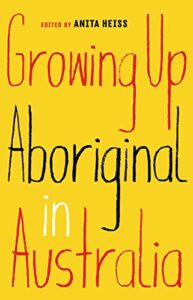 Growing Up Aboriginal In Australia (36 of 52), edited by wonderful author Anita Heiss, was awarded Small Publishers Adult Book of the Year at the ABIAs. It’s a heart-wrenching, sad, inspiring, awful, truthful, hopeful, eye-opening, educational and important anthology that showcases many diverse voices and experiences, and reveals the heartbreaking impacts of invasion and colonisation. Each piece speaks to the heart, calling for empathy, challenging stereotypes, and commanding respect, and sharing so many touching true stories about the lives of Aboriginal people in Australia today. Contributors include Tony Birch, Deborah Cheetham, Adam Goodes, Terri Janke, Patrick Johnson, Ambelin Kwaymullina, Jack Latimore, Celeste Liddle, Amy McQuire, Kerry Reed-Gilbert, Miranda Tapsell, Jared Thomas, Aileen Walsh, Alexis West, Tara June Winch, and many, many more. Dr Anita Heiss is the author of non-fiction, historical fiction, commercial women’s fiction, poetry, social commentary and travel articles, a Lifetime Ambassador of the Indigenous Literacy Foundation, and a proud member of the Wiradjuri nation of central NSW.
Growing Up Aboriginal In Australia (36 of 52), edited by wonderful author Anita Heiss, was awarded Small Publishers Adult Book of the Year at the ABIAs. It’s a heart-wrenching, sad, inspiring, awful, truthful, hopeful, eye-opening, educational and important anthology that showcases many diverse voices and experiences, and reveals the heartbreaking impacts of invasion and colonisation. Each piece speaks to the heart, calling for empathy, challenging stereotypes, and commanding respect, and sharing so many touching true stories about the lives of Aboriginal people in Australia today. Contributors include Tony Birch, Deborah Cheetham, Adam Goodes, Terri Janke, Patrick Johnson, Ambelin Kwaymullina, Jack Latimore, Celeste Liddle, Amy McQuire, Kerry Reed-Gilbert, Miranda Tapsell, Jared Thomas, Aileen Walsh, Alexis West, Tara June Winch, and many, many more. Dr Anita Heiss is the author of non-fiction, historical fiction, commercial women’s fiction, poetry, social commentary and travel articles, a Lifetime Ambassador of the Indigenous Literacy Foundation, and a proud member of the Wiradjuri nation of central NSW.
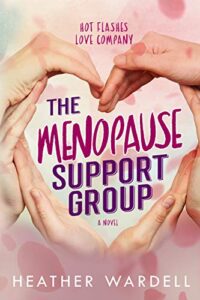 I don’t read a lot of women’s contemporary fiction, but I’ve been reading Canadian author Heather Wardell’s books since the first one came out in 2013 (Life, Love, and a Polar Bear Tattoo – which is free on all platforms), and have really enjoyed them all. One in particular I absolutely loved, and still think about (Planning To Live – although Heather told me this book is a love or hate one for her fans, which intrigues me). Her new book The Menopause Support Group (37 of 52) is a wonderful read – the characters are complex and real, all of them flawed and at times annoying, but as their pain and vulnerability is revealed, you can’t help but feel compassion for them and cheer them on as they learn more about themselves and each other. The friendships that develop are beautiful, and the support they give each other is really touching. It’s a wonderful read with lots of heart, the odd plot surprise, and a lovely message of love, friendship, support, second-chances, new dreams, and hope when you thought there would never be any again. And Heather’s newsletter is my favourite author one, with a free short story most months, pics of her adorable rescue cat, and a really engaging writing style and connection with her readers.
I don’t read a lot of women’s contemporary fiction, but I’ve been reading Canadian author Heather Wardell’s books since the first one came out in 2013 (Life, Love, and a Polar Bear Tattoo – which is free on all platforms), and have really enjoyed them all. One in particular I absolutely loved, and still think about (Planning To Live – although Heather told me this book is a love or hate one for her fans, which intrigues me). Her new book The Menopause Support Group (37 of 52) is a wonderful read – the characters are complex and real, all of them flawed and at times annoying, but as their pain and vulnerability is revealed, you can’t help but feel compassion for them and cheer them on as they learn more about themselves and each other. The friendships that develop are beautiful, and the support they give each other is really touching. It’s a wonderful read with lots of heart, the odd plot surprise, and a lovely message of love, friendship, support, second-chances, new dreams, and hope when you thought there would never be any again. And Heather’s newsletter is my favourite author one, with a free short story most months, pics of her adorable rescue cat, and a really engaging writing style and connection with her readers.
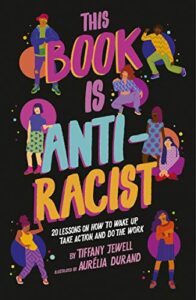
This Book Is Anti-Racist: 20 Lessons on How to Wake Up, Take Action, and Do the Work by Tiffany Jewell, illustrated by Aurelia Durand (38 of 52), is definitely worth reading. I opened it to find a line to post for an Instagram challenge – and ended up reading half the book immediately. This line really touched me: “You are made up of all the stories you cannot wait to share, and those you don’t want to tell, and everything in between…” Although it was written for young people facing racism, it’s an important read for ALL people, simplifying complex issues and offering exercises to get you thinking about your own understanding, your own biases, your own privilege, and what you can do to help. It’s no longer enough to not be racist, we have to be anti-racist…
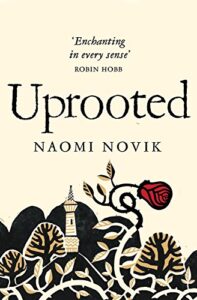
How could I not love a book about witches and wizards, kings and queens, evil forests and enchanted trees, that’s inspired by folk and faery tales, and has two awesome feisty young women at the centre? Uprooted by Naomi Novik (39 of 52) was a lovely read, despite me not especially caring about war and battle strategies, and I loved the way Agnieszka’s character and magic developed over the course of the story, and how connected she was to nature and the trees and the earth. It’s long, and a little grim (what faery tale isn’t!?), but beautifully written, and now I guess I should try to find where I put my copy of Naomi’s book Spinning Silver. (I have so many boxes of books to read, I really need to stop buying new ones and read what I have – but there are so many amazing new ones I just have to have too! My willpower is non-existent when it comes to books, but I guess it’s not the worse vice I could have!)
“The magic in Uprooted, with its realistic moral dimension, is so vividly believable that it almost seems you could work the spells. But the book will do that for you.” Ursula K. Le Guin
“Uprooted by Naomi Novik is enchanting, in every sense of that fine old word. A charming and inviting story that looks unflinchingly at the strangling roots of hurt and revenge.” Robin Hobb
Read about the eight books I read in May here.
Read about the twelve books I read in April here.
Read about the four books I read in March here.
Read about the four books I read in February here.
Read about the six books I read in January here.
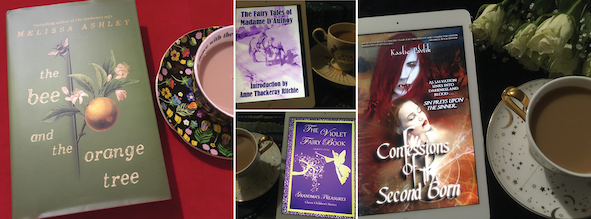
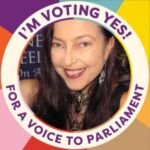

Get Social